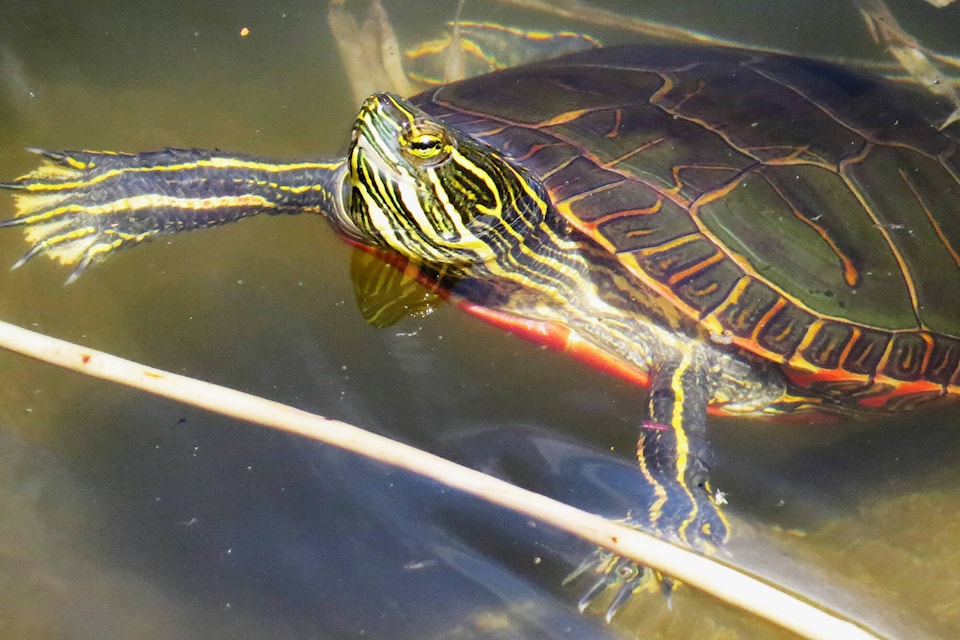When I spotted my first western painted turtle of the year on March 28, I felt a sigh of relief.
Once again the turtles at the Salmon Arm wharf had defied the seeming impossibility of spending the winter without taking a single breath of fresh air.
Like us, western painted turtles have lungs and get their oxygen from the air for most of the year. We are all familiar with their turtleheads poking through the surface and then disappearing underwater.
But when our lakes and ponds freeze over, these turtles sit out the winter beneath the ice on the bottom of the lake.
Since a turtle can’t generate its own body heat, their body temperature soon matches the cold water around them. This reduces their need for oxygen and the turtle enters a very special type of hibernation
Many types of animals hibernate during the winter.
Bats, marmots and ground-squirrels are commonly known examples. But their hibernation caves and burrows are either above ground or connected to the surface by tunnels.
Not so with the turtles under the lake ice, so how do the turtles stay alive?
Research has shown that submerged western painted turtles can actually absorb some oxygen directly from water through the skin on their necks, the inside of their mouths and through their cloaca (the elimination end of their digestive system). Through aerobic respiration, this oxygen can keep the turtle alive for at least part of the winter.
Read more: The turtle didn’t cross the road, thanks to a Shuswap group
Read more: ‘Give turtles a brake’: Conservation group asking motorists to slow down
If oxygen levels in the water decrease to a point below what is needed to sustain the turtle’s life, the turtles also have the ability switch to anaerobic respiration (not needing oxygen) that can sustain them until spring.
This super-power allows our turtles to survive long periods under the ice.
Not surprisingly, our western painted turtles have one of the most northern ranges of any turtle in North America.
Having survived the winter beneath the ice, female painted turtles start laying their eggs as May turns to June.
A female turtle digs a shallow nest in soft ground, deposits her eggs, closes the egg chamber with gently-patted soil and walks away.
About two months later, the eggs hatch, but instead of digging their way to the surface, the hatchlings often stay underground for their first winter. Here freezing to death is the challenge if frost deeply penetrates the ground. Amazingly, baby painted turtles can survive having their body temperature go well below zero.
While the turtles you see loafing on rocks and logs in the summer sun may seem unadventurous, I’ve come to think of them as wonders of nature that regularly perform super-cool feats of survival!
Where to see turtles in the Shuswap Area: The Salmon Arm wharf is my favourite place to watch swimming turtles. Look for them in the shallow water beneath the wharf and between the docks.
You can often see turtles swimming underwater if you look directly down.
Sun-bathing turtles are often spotted on the shore along the boat launch channel and in the little “turtle pond” in front of the hotel.
If you have a canoe or kayak, Gardom and Skimikin lakes are super for a turtle-watching paddle.
newsroom@saobserver.net
Like us on Facebook and follow us on Twitter
Sign up for our newsletter to get Salmon Arm stories in your inbox every morning.
